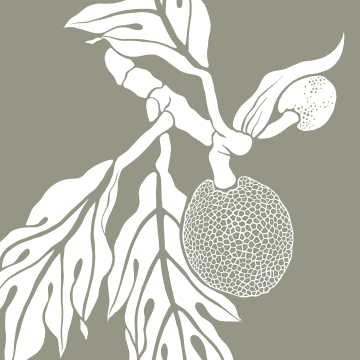
Yields for a single breadfruit tree can vary, depending on the variety, age, and condition of a tree. Average yields are 150–200 fruits per tree.
The abundance of fruit from a single tree means you’ll need to consider how you’ll use that harvest. Will your household be able to eat 150 ‘ulu? If not, how will you distribute the excess that your household cannot eat?
Harvesting ‘Ulu
Breadfruit is generally harvested while it’s mature but not yet soft and ripe. At this stage, breadfruit is used as a starchy replacement for potatoes, often added to soups and stews or fried like potatoes.
Once harvested, the breadfruit will begin to ripen, becoming softer and sweeter. (It happens quickly so keep an eye on it!) At this stage, ‘ulu can be used in desserts and baked into quick bread. Very soft ripe ‘ulu can be eaten raw.
When to Harvest Breadfruit
If you’re harvesting ‘ulu before it’s fully ripe, how do you know when to harvest it? A breadfruit will begin to show signs of maturity. Watch for these:
- The surface of the fruit itself becomes flatter and less bumpy than in its early stages.
- You’ll notice the separation between each section begin to turn from green to brown.
- A white latex begins to become visible on the breadfruit.
- The color of the fruit changes from a deep green to a more yellowish green.
These hints are also helpful when choosing a breadfruit at the farmers market!
How to Harvest ‘Ulu
Unharvested breadfruit will drop and litter the ground below the tree. This fruit is edible if picked up regularly, but if left to rot it will draw pests and fruit flies.
Can Lisa speak to this?
- need ladder?
- okay to harvest fruit that’s dropped
- fruit picker
